How Viktor Orbán decided to arm Hungary

In a tense atmosphere, a leadership meeting took place in late 2010 at the Ministry of Defense’s Balaton Street building in Budapest. In the ornate ministerial meeting room, opened only on rare occasions, Tibor Benkő, then chairman of the Joint Chiefs of Staff, and some of his colleagues gave a presentation on the state of the Defense Forces. Minister Csaba Hende and about 30 ministry staff and military leaders were present.
The presentation was based on a document of several hundred pages, which painted a devastating picture of the country’s defense capabilities. Benkő and his colleagues told the people sitting around the long conference table that the guarding of obsolete and depreciated equipment alone was costing 15 million HUF a month, there was talk of potential operational problems due to the flying hours of Gripen aircraft, and it was also said that the Hungarian defense forces would not be able to defend the country in their current state. Indicating the seriousness of the problem, Benkő said that it was calculated that the equivalent of the ministry’s 20-year budget would be needed to recover the “lost capabilities.”
At that time, there was neither money nor political will to do it. Since the 1990s, the country’s leadership had been thinking that there was no realistic risk of a military attack against Hungary. The dominant position was that it would be sufficient for Hungary to participate in missions abroad organized by its allies.
In comparison, the government is now once again spending huge sums on the development of the armed forces under the Zrínyi 2026 program (The program is named after Miklós Zrínyi, a 16th century Croatian-Hungarian General). Contracts have been signed for the purchase of the American-Norwegian NASAMS air defense system, Hungarian small arms development has been relaunched, troop transport aircraft and helicopters have been bought, and hundreds of German tanks have been ordered.
This process had already begun years before the war in Ukraine, and Direkt36’s research suggests that a number of factors played a role. On the one hand, the improvement of the economic climate allowed the government to start spending on this. There was also international pressure on the Hungarian government, primarily from NATO, but the personal appeal of the military to Prime Minister Viktor Orbán, who used the resources of the Hungarian Defense Forces to deal with the politically crucial refugee crisis, also played a role in the changes.
The development of the military has also meant that Orbán changed the course of defense leadership in recent years. Whereas previously it was mainly leaders with military expertise who played a dominant role in the Ministry of Defense, now people with no military background but with business and procurement experience have been appointed to influential positions. This is how Gáspár Maróth, who had previously worked in the health sector and had been in the prime minister’s entourage for decades, became a key player for years. He left the Ministry of Defense in November 2022, after conflicts with Kristóf Szalay-Bobrovniczky, a former business partner of Prime Minister Orbán’s adviser, Árpád Habony, who took up the ministerial post in the spring and is perhaps even more entrenched in the government business world than him.
Despite the ambitious programs and forceful announcements, the defense sector continues to face a number of challenges. The government may purchase modern equipment, but if there is a shortage of technicians to service and operate it, all efforts could be in vain.
New philosophy
According to those close to him, Csaba Hende would have liked to embark on major defense developments, but during his tenure as minister he only managed to make minor changes between 2010 and 2015. One of these was the reform of the voluntary reserve system, which by 2014 had attracted 5,000 volunteers. However, the NATO requirement of spending two per cent of GDP on national defense was never achieved under Hende’s ministership. In fact, in 2010, defense spending was just over one percent of the GDP, but by 2014 it had fallen to 0.86 percent.
What has changed so much in this period is that, according to source close to the government at the time, Hende was the first in a long time to put emphasis on developing territorial defense. This was a change of philosophy from the previous military thinking, which had been mission-oriented.
Over time, the economic environment improved, which opened up the possibility for costly developments. However, according to sources with insight into the process, external factors also played a significant role in Viktor Orbán’s willingness to spend thousands of billions of forints on defense development.
In September 2014, six months after the Russian invasion of Crimea, the NATO summit in Newport, Wales was held, where the Americans made it clear that they expect all member states to spend two percent of their GDP on defense within ten years. The demand was strengthened at the NATO summit in Warsaw in 2016, where the alliance decided to increase its military presence in Poland and the Baltic States and to strengthen cyber defense.
These developments have had an impact on Hungarian attitudes, which may have been influenced by Orbán’s much more positive view of the military alliance than of other Western institutions.
“It’s no coincidence that while the prime minister criticizes the EU, he has no such remarks about NATO. He sees NATO as a force, and he likes it,”
a source close to the government who is involved in military matters said.
There was another important development that also shaped domestic politics: the refugee crisis broke out in 2015, to which the Orbán government reacted with harsh anti-immigration measures. This also meant that the armed forces were deployed to reinforce the border, which also provoked opposition in military circles, as this is not traditionally one of their tasks.
“This is border surveillance, not border protection. The soldiers are neither trained nor equipped for this,”
said a former diplomat now involved in security policy.
However, Orbán was adamant, if such concerns were raised with him at all. His expectation was for the military to build the fence on the Serbian border by 31 August 2015, but only the wire fence was completed by the deadline, after which Csaba Hende left the ministry. Although no one has officially confirmed that Hende resigned because of the fence, the circumstances suggested that he did. The change at the top of the ministry happened so quickly that Hende’s successor, István Simicskó, said that he too had been caught by surprise.
Simicskó, who has been in politics in Fidesz and the Christian Democratic People’s Party (KDNP) for decades, was before his appointment state secretary for sports in another ministry, but he has also been involved in national security and defense issues as a member of parliament and government official. A kung-fu enthusiast for 30 years, he was eager to throw himself into ministerial work, and at the end of 2016 he came up with the idea of the Zrínyi 2026 program for the development of the armed forces.
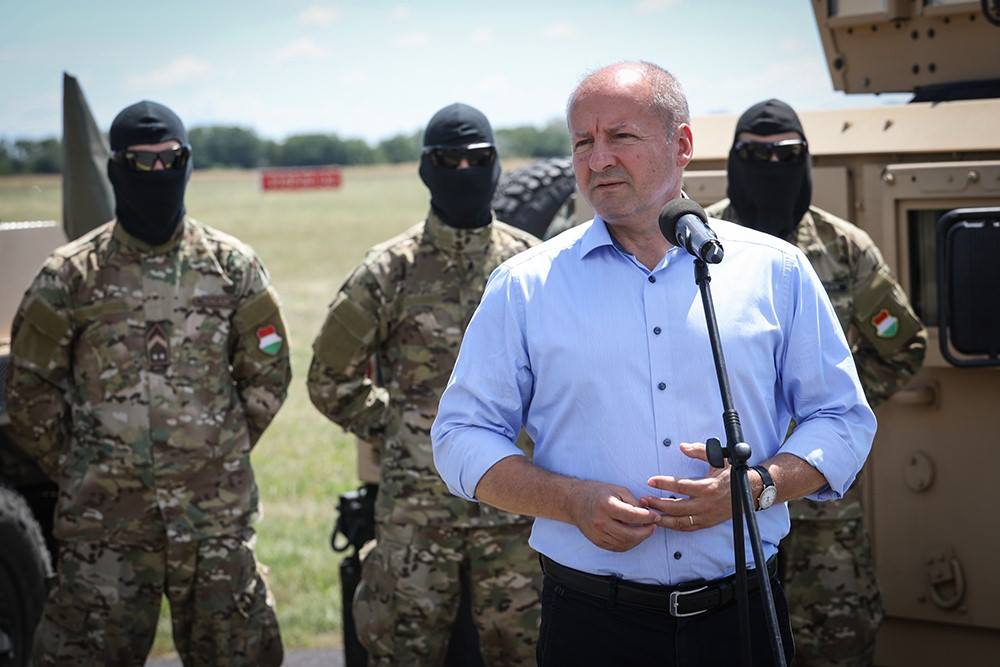
István Simicskó at the Szolnok Helicopter Base in 2017 Source: Simicskó istván / Facebook
In it, he also promised to reorganize the volunteer reserve system, launch recruitment campaigns and the Defense Sports Association, and strengthen defense education. On the renewal of the defense equipment, he said that plans included the purchase of transport aircraft and helicopters.
The plans presented by the Minister to a closed session of the Parliament’s Defense and Law Enforcement Committee were much more than that. Simicskó presented a program that did not include the development of a specific area, but the acquisition of a wide range of military equipment.
“It was as if he was presenting a plan to buy everything that is available,”
a source familiar with the details of the meeting recalled from the late 2016 session (Simicskó told Direkt36: “No one could have seriously thought at the time that we would then present ready-made plans on exactly what weapons we would buy from whom. We did not want to keep the weapons of the past, but to prepare the Hungarian defense forces for the future.”)
For this task, an actor emerged who had no previous military background, but who had long been in Orbán’s entourage. He was Gáspár Maróth, who first appeared in 2016 in a back office of the Ministry of Defense and gradually gained more and more influence in the field of procurement.
Maróth, born in 1972, was already present in the Fidesz environment when he was young, in the 1990s, and according to an old acquaintance, he personally accompanied Orbán to political events even before the ’98 elections.
His father, Miklós Maróth, a renowned scholar of the Arab world, was one of the few academics with openly conservative views and he also had a good relationship with Orbán. Maróth Jr. also worked for Napi Magyarország, a Fidesz sympathizer daily, and joined the prime minister’s cabinet after the party’s victory in 1998. At that time, he was still a medical student at Semmelweis University and, as such, he was also responsible for health issues in the cabinet, and was responsible for social relations, according to his own words.
After the defeat of Fidesz in the 2002 elections, Maróth worked as an entrepreneur. His official CV, available on the government website until his ouster, describes this period tersely as ‘CEO, private sector’, but company registration data reveal that he had interests in nine companies, mainly in the distribution of medical devices. In 2009, he sold one of his companies to Zoltán Spéder, a banker with good Fidesz connections at the time, and after 2011, for four years, he owned a construction company with Viktor Orbán’s high school mate Zsolt Incze.
Most of Maróth’s companies were active in the healthcare sector. Of these, VMD Zrt., a medical equipment manufacturer, made it to the news when the Hungarian Competition Authority (GVH) investigated its role in a case involving the procurement of medical equipment from 2016, which resulted in a fine of 1.6 billion forints for irregularities. Maróth was initially suspected by the GVH to have been the organizer of the cartel with Sándor Harmat, who had previously been convicted of industrial espionage, but the investigation by the authorities found no evidence of this and VMD was not fined.
Maróth was appointed in 2016, at the launch of Zrínyi 2026, to head HM EI Ltd., a company that operates as a kind of back office for the Ministry of Defense – admittedly because of his business experience. “They wanted to do the procurement with HM EI, but it was totally inappropriate. It’s a big, unwieldy organization, not designed for that. It basically deals with guard protection and services,” said a source with an insight into defense affairs.
Maróth also said he had come to military procurement without any substantial defense experience.
“If Germany’s defense ministry and then the European Commission can be managed by a former medical colleague of mine, Ursula von der Leyen, then I can try a more narrowly focused role,”
Maróth explained in a recent interview why he turned up at HM EI in 2016. He went on to say that his business experience is primarily used in force development. “Obviously you don’t pick up coherence and knowledge during medical school. I later moved into the business world, involved in hospital development and international projects. It was from this perspective that I came to the defense environment.”
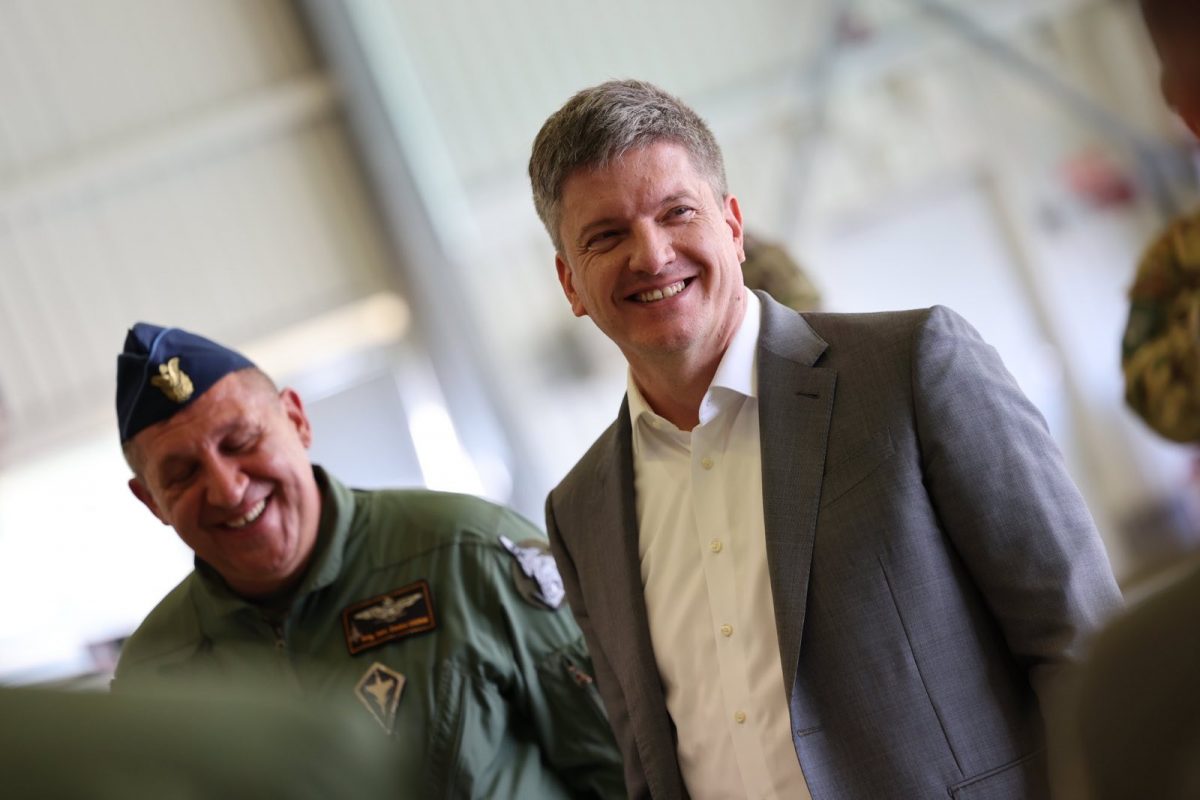
Gáspár Maróth (r) at MH 59. Szentgyörgyi Dezső Air Base in Kecskemét in 2022 Source: Maróth Gáspár / Facebook
Maróth has been a key player in procurement throughout the years, but his positions have been constantly changing. In 2017, he left the HM EI for the Ministry of Defense to become the National Armaments Director. From 2018 to 2022 he worked as the Government Commissioner for Defense Development in the Prime Minister’s Office. He was also the owner of the state-owned Defense Procurement Agency, established in 2019, and after the Fidesz’s 2022 election victory he was again employed by the Ministry of Defense, where he became state secretary for Defense Policy and Defense Development.
The German connection
The procurement of military equipment has been picking up since 2018, and this has also boosted international relations. Earlier, Direkt36 reported that the Hungarian government was in talks with the US to buy a missile system, an agreement about it was reached in 2020. That was the NASAMS US-Norwegian joint development system. At the time, the deal was reported to be worth a billion dollars.
Despite this, the Hungarian government’s biggest deals are not with the Americans. This may be because, as a former US diplomat outlined to Direkt36, the only way to get weapons from the United States is through cumbersome bureaucratic mazes.
“If you want to buy arms from the US, they open an account for you in the country, you have to transfer the money there, and from there it is up to a US official to pay it to the selling US company. It’s a transparent system, designed to prevent corruption. The details of arms sales are public,”
the former diplomat said. The same cannot be said of Hungarian arms sales, the details of which are scarce. They are usually presented only in closed sessions in the Committee on Defense and Security.
Germany, a key economic and political partner for the Orbán government, is making a great deal with Hungarian arms purchases. So much so, that in 2021 it was revealed that between 2017 and 2021, Hungary bought or placed orders with Germany for arms worth €2.36 billion – 821 billion HUF at the exchange rate of the time. This makes Hungary the biggest arms spender in Germany over this period.
German arms manufacturers need government permission before they can sell anything abroad. To do so, they need to apply for an export license, worth €2.36 billion.
In December 2018, the government agreed with the Krauss-Maffei Wegmann group to supply 44 Leopard 2A and 12 A4 tanks and 24 Panzerhaubitze 2000 self-propelled guns, along with 13 transport vehicles, under a contract worth €300 million, according to German sources.
Then, in the summer of 2020, an agreement was reached with Rheinmetall for the procurement and production of Lynx infantry fighting vehicles in Hungary. The Hungarian Defense Forces will soon have 218 Lynx vehicles at their disposal – the first of which arrived in Hungary in 2022 – of which 172 will be manufactured at the Rheinmetall Hungary Zrt. plant in Zalaegerszeg, which was established for this purpose. In addition to the Lynxes, Hungary has also ordered nine BPz3 Büffel technical rescue vehicles. Also in 2020, an agreement was reached on the procurement of a radar system and the construction of another Rheinmetall factory in Hungary: the production of medium and large caliber ammunition will start in Várpalota, scheduled for 2024 and 2025 respectively. No official information is available on the total cost of the latter. A Rheinmetall factory will also be built in Kaposvár, where tanks will be produced. The city’s Fidesz mayor, Károly Szita, says the investment will cost 30-50 billion forints.
According to an expert on the European defense industry, these plants were also of great importance to Germany. “The contract in Hungary was important for Rheinmetall because it gave it the first country to which it could export Lynx KF41 and KF31s. Many countries impose the condition that the combat equipment must have been demonstrated elsewhere before it can be purchased,” Gustav Gressel, an Austrian military expert at the European Council of Foreign Relations, told Direkt36. The development that preceded the Lynx was the Puma tank, but Gressel said it was too expensive because of the German government’s requirements. The expert calls the Lynx the “degermanised” Puma, which is slightly cheaper and easier to produce. Gressel estimates the price of a Puma at five million euros, but says the Lynx is only slightly cheaper.
At the end of last year, 18 Pumas of the Bundeswehr were disabled in a military exercise, which also raises questions about the Lynx’s combat capability – but we have not received a reply from the Ministry of Defense to our questions on this.
Rheinmetall promises customers of the infantry fighting vehicle, which can carry 11 people at a time, “enormous firepower” and “unbeatable mobility”. More than 200 of these alone are expected to be available to the Hungarian defense forces by 2030, 142 of which will be produced in Hungary.
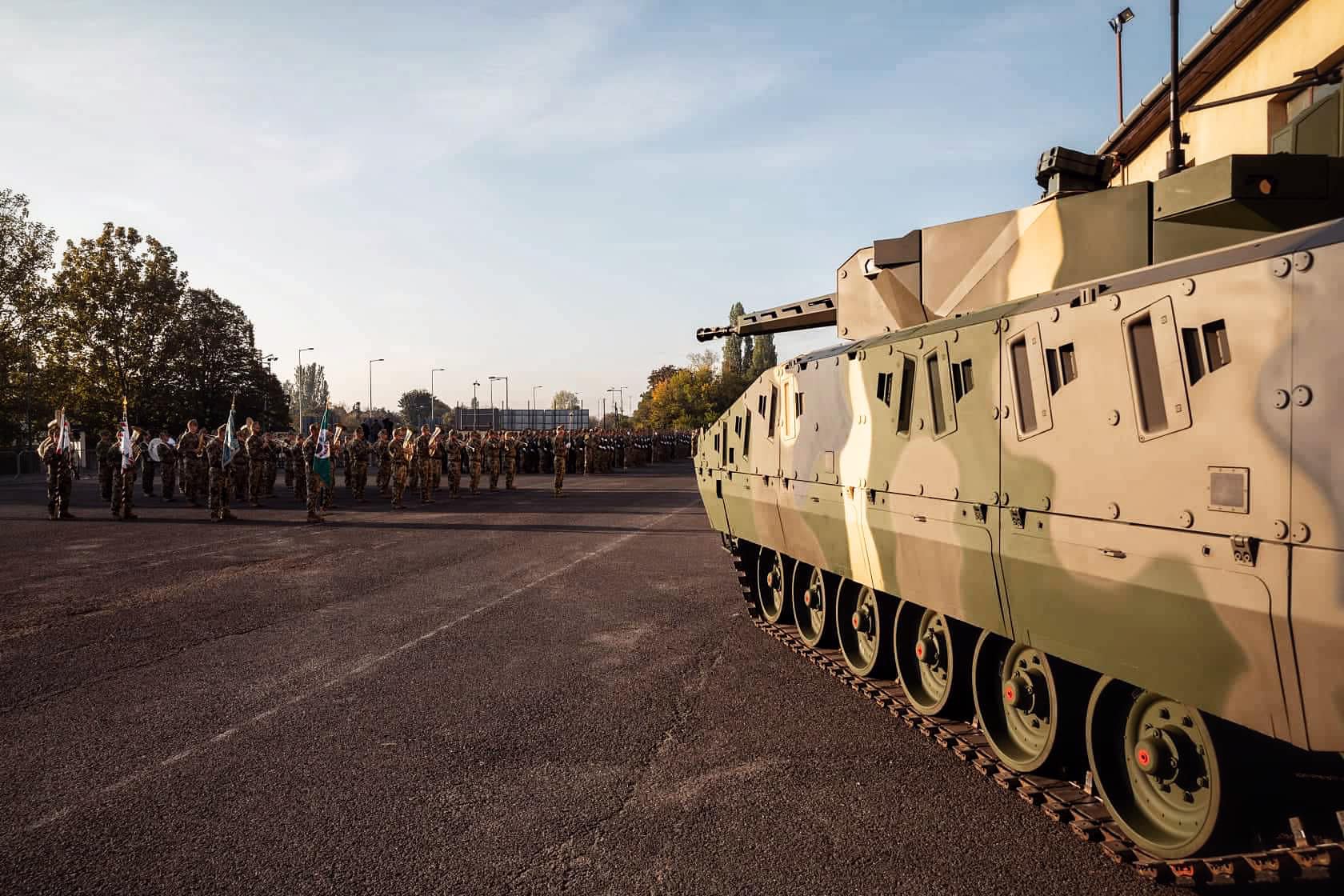
A new Lynx of the Hungarian Army at a Military Base in Budapest Source: Szalay-Bobrovniczky Kristóf / Facebook
The government is not only importing weapons from abroad, but is also trying to build up domestic production. From 2023, Rheinmetall will also produce armored vehicle ammunition for the Hungarian defense forces worth “hundreds of millions of euros”. Most of the ammunition will be produced in Hungary, according to the company.
The state has set up a joint venture with Airbus Helicopters, whose Gyula factory started helicopter production in 2022.
Airbus has also supplied aircraft to the defense forces: two A319s are available, which – together with two Dassault Falcons – are frequently flown by members of the government. According to public flight records, in recent years they have also been to Las Vegas, the Canary Islands and Dubai, among other places. In 2018, Tamás Harangozó, as an MSZP MP, asked a question about the trips to the then Minister of Defense, Tibor Benkő, who said that the data of the trips of the military aircraft were classified for 30 years, but as a parliamentarian he had the right to see the classified documents. Harangozó told Direkt36 that he cannot share secret information with the public, but based on the documents he has seen, he claims that the planes were clearly not used for military purposes on several occasions.
There are also transactions in which the state military business is linked to the business empire that has grown up around Fidesz over the past decade. Rheinmetall, a German equipment supplier, has entered into a business partnership with 4iG, an IT company formerly belonging to the Lőrinc Mészáros empire, which has been expanding rapidly in recent years in the Hungarian and regional markets.
“One of the world’s leading defense digitalization development is coming to Hungary, which will make Hungarian defense development unique in the region,” Maróth said in a statement issued after the deal was closed.
Militarily, these company formations and manufacturing capacities may make sense because they will make the Hungarian army’s combat equipment interchangeable, and in case of issues, there will be no need to wait for spare parts. “But if there is no service background, it’s just a scam,” added Tamás Harangozó, referring to the shortage of technicians in the armed forces.
According to a former government official with military connections, the shortage of staff and expertise is a real problem. To his knowledge, some new equipment is “rotting in storage” – as is the case with some weapons purchased from the US, according to a former US diplomatic source – while there is also a shortage of staff to operate them.
“Defense personnel are in a state of disrepair, including officers. This is not true for those who have experience abroad,”
the source added.
Kristóf Szalay-Bobrovniczky also hinted in an interview last November that more soldiers were needed. “We can buy all the drones, tanks and other equipment in the world if we don’t have Hungarian soldiers who are trained, determined and brave enough to handle them. We will pay even more attention to training the professional personnel, and perhaps even more so the reserve personnel,” the minister told HírTV.
Our questions to Szalay-Bobrovniczky via the Ministry of Defense were not answered. Asked about personnel, Gáspár Maróth said it was not his responsibility, but said equipment purchases included several years of service. “The factories in Hungary were basically strategically established to be able to cover the service needs of the Hungarian Defense Forces at any given time,” he added.
Business over soldiers
While Gáspár Maróth has been making deals, there have been several changes at the head of the Ministry of Defense in recent years. Although Simicskó told a person close to him towards the end of his ministry that he was confident he could stay on, he was not able to continue. Simicskó reminded Direkt36 that he was not the only minister who did not continue his work as a minister. “In hindsight, it seems that Viktor Orbán made the right decision, because I am not the one who can make deals with defense companies,” Simicskó added.
After the 2018 election, Orbán asked Tibor Benkő, the former chief of the general staff who had been a strong advocate of force development since 2010, to become minister. But he did not have to deal directly with procurement, which remained the responsibility of Maróth, who was then government commissioner for defense development at the Prime Minister’s Office.
“The politicians set the intentions, the soldiers decide what tools are needed, and Maróth is doing the market research,”
said a source with contacts in the Ministry of Defense. Another noted that Maróth had “got the manager-style right”.
However, after the 2022 election, Orbán created a line-up in the Ministry of Defense that indicated that the focus is now clearly on business. The new minister is Kristóf Szalay-Bobrovniczky, who has long been involved in Fidesz-related business. He was the publisher of Heti Válasz, a conservative weekly, back then with close-ties to Fidesz, co-owner of Századvég Gazdaságkutató Ltd. which worked for the Orbán government, and had a joint venture with Árpád Habony, a confidant of the prime minister.
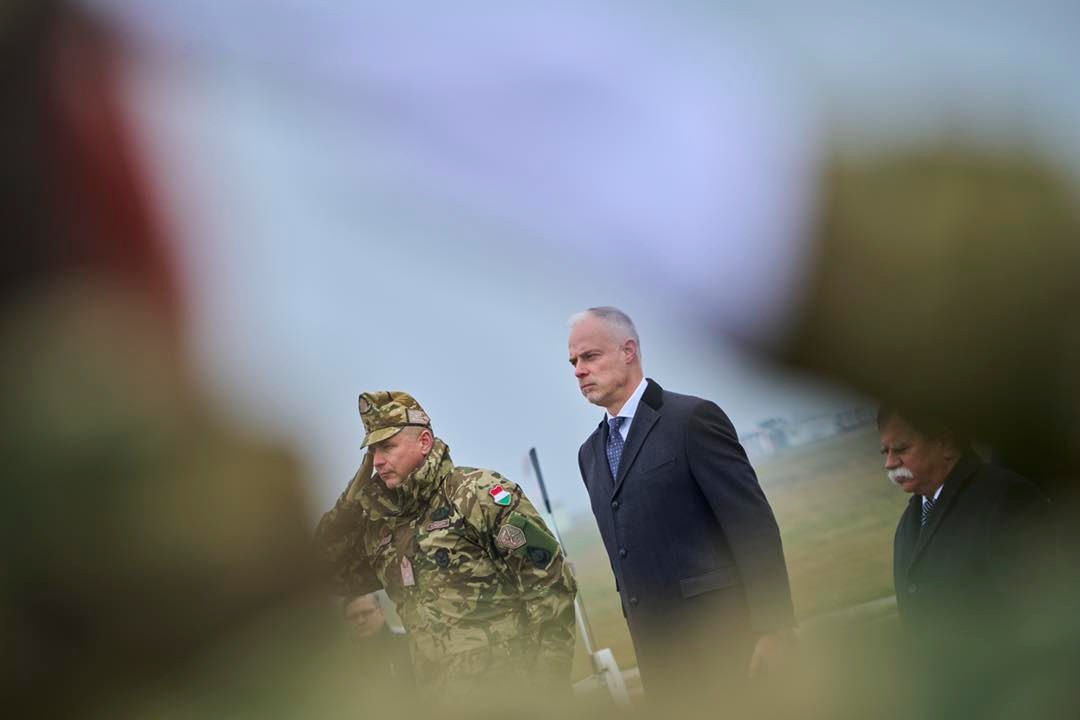
Kristóf Szalay-Bobrovniczky (r) and Romulusz Ruszin-Szendi, the commander of the Hungarian Army Source: Szalay-Bobrovniczky Kristóf / Facebook
A year before his appointment as minister, he had struck a major deal in the Czech Republic. With the help of a €150 million loan from the Hungarian Development Bank, his company HSC Aerojet acquired the Czech aircraft company Aero Vodochody, which he sold to Mol leader Zsolt Hernádi after his appointment as minister. Hernádi also acquired another company, the Hungarian subsidiary of the Russian Transmashholding, in which he had a 50 percent stake – the remaining 50 percent of the ownership remained in Russian hands. The company was also previously reported by Direkt36 after it managed to oust a Hungarian company, Ganz, from an Egyptian railway tender worth hundreds of billions of forints.
Szalay-Bobrovniczky’s lack of knowledge of defense issues was evident at his committee hearing, when he used his own reserve service and his family’s military background as evidence instead of professional knowledge. “It may not be taken as an exaggeration or sentimentality to mention that I come from a military family, both my grandfathers were Hussars in the Ludovika and my family memory includes several generals, four to be specific. I can name one of my ancestors who was present at Mohács, one who was present at Nagybecse, one Bobrovniczky, who was killed in the Rákóczi War of Independence another one was a military officer in 1848.” As for his own military past, he said that “the first time that the Orbán government, not long after coming to power in 2010, gave me the opportunity, I volunteered for the reserve.”
Despite the family reminiscences, it was clear that the arrival of the new minister represented a change of direction.
“Up to now, the ministry had been in charge of military policy and procurement policy. With Szalay-Bobrovniczky’s arrival, only procurement remained,”
said a source with insight into the ministry’s operations.
It also meant that Gáspár Maróth’s career as military dealer for the government had come to an end. After the election, he returned to the Ministry of Defense, and this time he was given the rank of State Secretary for Procurement, but his tenure was short-lived. On 15 November, at Orbán’s suggestion, President Katalin Novák dismissed Maróth from the position. The reason is not known, but sources with insight into the ministry’s affairs say it was simply a case of a mismatch between two leaders with similar interests in the ministry.
“There is no room for two kings in one castle. It was clear that this could not go on for much longer,” said one source about the relationship between Maróth and Szalay-Bobrovniczky. On Maróth’s dismissal, the minister said that the reorganization of the Ministry of Defense was complete and that the tasks of the state secretariat needed to be reorganized. A source close to the government said that Maróth would certainly not be left without a government post because Orbán has “a long memory” and does not tend to forget those who have been with him for a long time. When asked, Maróth said he had not yet decided in which area he would continue his work.
The former state secretary told Direkt36 that he had a conflict with Szalay-Bobrovniczky, calling it an “unfounded rumor”. He also explained his departure by saying that “a new chapter in the reconstruction of the Hungarian defense industry is now beginning.”
A few days before Maróth, László Palkovics, Minister of Technology and Information, also left the government after the creation of the independent Ministry of Energy would have reduced his powers. As minister, Palkovics was also responsible for the development of the defense industry. Soon after Maróth’s dismissal, Szalay-Bobrovniczky announced that the N7 National would be transferred from the defunct Ministry of Technology and Innovation will be transferred to the Ministry of Defense and Palkovics will be appointed as its head.
N7 was previously headed by Palkovics’ chief adviser, László Jakab, but it was under the supervision of the minister and, according to a former government source, the company played a key role in procurement because most of its business was done through it.
Military Prime Minister
Orbán’s increasing emphasis on military elements in his rhetoric in recent years is a sign of the centrality of force development. As early as 2018, 444.hu cited a research that “Orbán has been speaking in an increasingly militant tone since 2014, increasingly using military terms, words referring to fighting and war, and words related to it.”
Now it is even clearer. In his speech on 23 October last year, for example, Orbán noted those who shot at Hungary “from the shadows and from the heights of Brussels”, and on the first Sunday of Advent he shared photos and video of his wreath-buying with the tagline “Operation Advent” on social media.
At the October swearing-in ceremony for volunteer soldiers, he said that with the war in Ukraine and other threats, “it is time to awaken the soldier spirit in ourselves”. He added that nations that cannot do so will fail.
“And there are nations that have already started to prepare. We cannot fall behind in this,”
Orbán said.
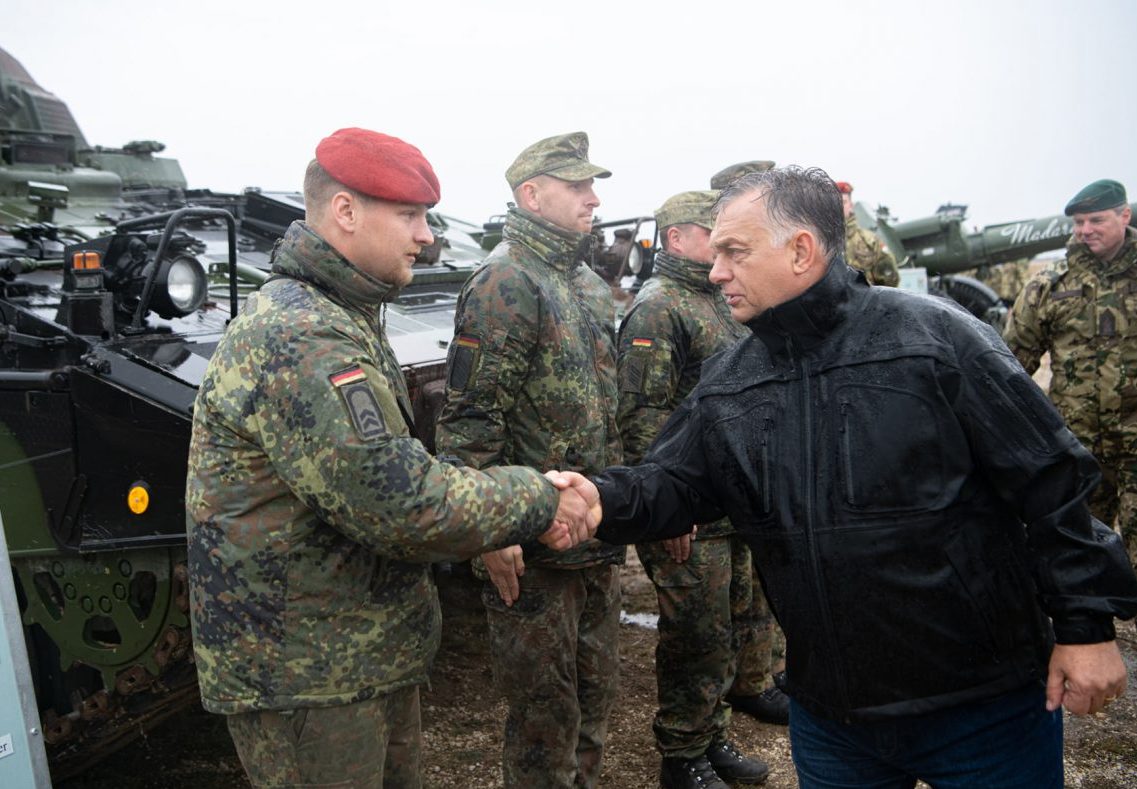
Viktor Orbán meets soldiers at a military drill. Source: Orbán Viktor / Facebook
But Hungary is not necessarily doing well in regional comparisons. Although Tibor Benkő, as minister in 2019, said that the developments could “create the most capable army in the region”, there seems little chance of this happening as the economic situation deteriorates.
A single procurement can often run into hundreds of billions of forints – and the final costs could be substantially boosted by the weakening of the forint. Contracts are signed in dollars or euros and, as one member of the defense committee put it, “there is no way they would have expected 420 forint-euro exchange rate before”. In addition, the money spent on procurement only covers the equipment, not the training of soldiers, the installation and other costs needed to store the equipment purchased. “There is very little data on training and deployment in the Zrínyi,” added a source with knowledge of military affairs.
MSZP MP Tamás Harangozó recalled that he had recently met a Polish MP “who said that everyone in government and opposition agreed on one thing: the need to arm and the fear of Russian aggression”. According to Harangozó, they are serious about this and “plan to have more HIMARS next year than all the other European countries put together” (HIMARS is an American-developed, easily maneuverable artillery piece that has been a major contributor to Ukraine’s military successes in recent months).
“What does it even mean to have the most capable army? It’s just political posturing,”
a former ministry official suggested. “You can’t compare yourself to the Poles: they have a sense of being a middle-power, and they are so much bigger, so much more afraid of the Russians and hate them so much, that it makes them united. But the Romanians are also aiming to demonstrate serious power in the south-east,” he said.
According to a former defense ministry official, everyone in the region is arming and the Romanians, Slovaks and Poles are investing heavily in it. “There will be great progress here at home, there is no doubt about that. But when I hear that the Hungarian army will be the most capable in the region with Zrínyi 2026, I can only laugh,” he added.
Szabolcs Panyi and András Pethő contributed to this article.
Cover picture: Szarvas / Telex


